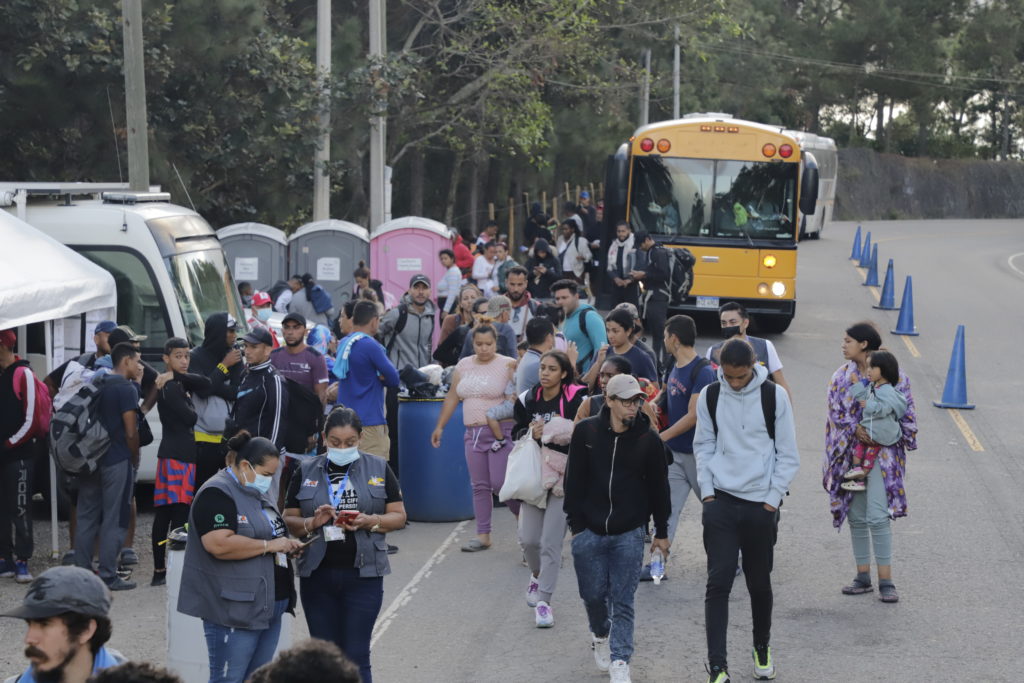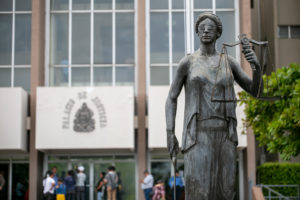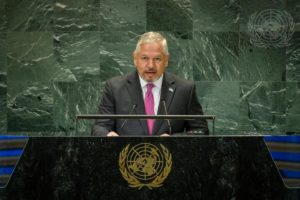In Honduras, the journey of thousands of migrants has been exploited by businesses that generate millions of lempiras in profits. In addition to Honduran migrants, Cubans, Nicaraguans, Haitians and Venezuelans have become a source of income for “coyotes,” people who smuggle migrants across borders. According to sources consulted by Contracorriente, they earn up to 50 thousand lempiras ($2,000) a day and now employ children for certain kinds of jobs. Small and peaceful municipalities close to the border between Honduras and Guatemala are affected by the transit of migrants, an issue that the State has ignored.
Text: Allan Bu
Photography: Amílcar Izaguirre
Translation: José Rivera
English edit: Amy Patricia Morales
At a distance of four kilometers from Agua Caliente, the border checkpoint between Honduras and Guatemala, there are groups of people who, like predators stalking their prey, wait for the arrival of migrants. In that area, there are dozens of privately-owned vehicles that belong to people who run a highly profitable business smuggling migrants to Guatemala through clandestine roads. This business generates thousands of dollars in profits every day.
This is the end of the road of a profitable business that thousands of migrants –most of them Venezuelan, Cuban and Haitian– see as a way out of Honduras. Up to this point, they have been extorted by authorities, and many have been charged excessive fees by these businesses.
Since the beginning of the migration flow through Honduras, the business has charged different fees to migrants traveling from Danlí, a city in southeast Honduras, to Ocotepeque. For instance, Jhony Oliva, municipal secretary of Santa Fe, said that migrants have to pay “$5 for a cup of coffee.” To put it into perspective, a local Honduran resident can get a cup of coffee for 10 or 15 lempiras (about $0.60), but if they’re looking for specialty coffee, a cup costs between 50 and 60 lempiras (about $2.4).
This movement of migrants became notorious by the end of 2020, when a group of Haitian migrants were stranded in Trojes, El Paraíso, in the Honduras-Nicaragua border. Since then, the flow of migrants has not stopped, on the contrary, it has increased. A peak was registered by the National Institute of Migration (Instituto Nacional de Migración – INM) in mid-July 2023, when more than 5 thousand migrants entered the country per day.
On November 5, Divergentes, a Nicaraguan media outlet, published an article informing that Daniel Ortega’s regime allowed charter flights transporting thousands of Haitian migrants heading to the U.S., to land at Augusto C. Sandino International Airport in Managua. According to Divergentes, Ortega is also making a profit and charges $2,000 for each charter flight to land at the airport, and every migrant pays a $45 fee.
The unusual arrival of thousands of migrants in Honduras, on the one hand, has strained the capabilities of a state struggling to meet the needs of its own citizens. According to the World Bank, the poverty rate in Honduras is 52%. Hundreds of individuals take advantage of the situation and make thousands of dollars per month by providing services such as transportation, hotels and consumption goods, all of which are offered to migrants at exploitative prices.
In the case of the transportation business, the sector is so lucrative that the Honduran Institute for Land Transportation (Instituto Hondureño del Transporte Terrestre), a state agency, issued permits for a “migrant route” to begin operating, exclusively for transporting people in transit. Each migrant pays a $40 fee, so each private vehicle generates a profit of 50,000 lempiras (about $2,000) or more a day. It’s a massive business and each day, 40, 50 or more buses can make the trip. According to Reporteros de Investigación, public officials are directly involved and even own some of the buses.
Throughout the route –which usually begins in southeastern Honduras, at the Nicaraguan border, and ends in Agua Caliente, Ocotepeque– migrants are taken advantage of in every way possible. Human rights organizations reported that bus drivers have identified restaurants and gas stations where migrants usually stop, where they are offered goods at “special prices.” Moreover, according to complaints by human rights organizations and migrants, there are many state security checkpoints between Danlí and Ocotepeque, where migrants are extorted despite the fact that most of them have permits allowing them to be in the country for five days.
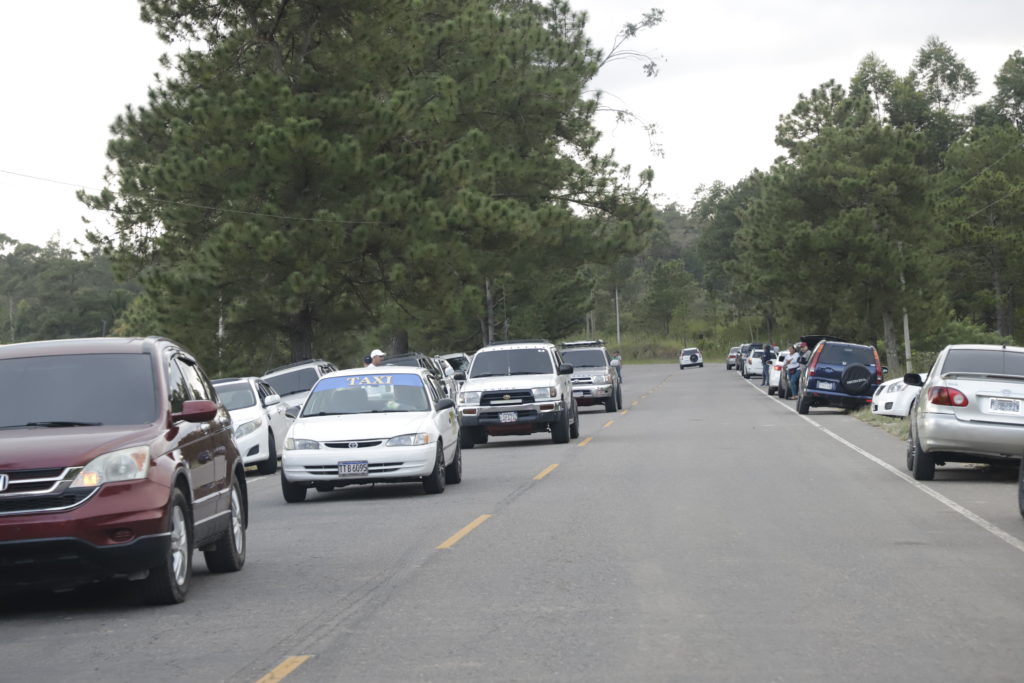
Buses drop migrants off at about four kilometers from the border checkpoint of Agua Caliente. This is where the smugglers, introduced at the outset of this article, wait for migrants to offer them transportation and a way out of Honduras. “They’re in the hands of the business,” they say in Ocotepeque. The “business” is the domestic and international network that smuggles migrants across the border and hands them over to partners in Guatemala.
Each migrant pays a $20 fee to be brought close to the border. They pay guides or “coyotes” an additional $5 to cross the border to Guatemala through clandestine roads.
It’s a profitable business. In Nueva Ocotepeque, there are disputes among migrant-smuggling groups vying to maintain a position in the market. There are thousands of dollars at stake, and hundreds of people are employed by these businesses. Profits have allowed some individuals to climb the social ladder. How does this unusual business change the dynamics in such small communities? “My neighbor had a motor rickshaw, but now he has three trucks parked in front of his house,” a source said.
Ocotepeque: “the hospitality capital”
Nueva Ocotepeque –a small Honduran town located near the borders of Honduras, El Salvador and Guatemala– is known by locals as the “hospitality capital.” They are proud of this. The town has wide streets and a cool climate, situated a few kilometers away from Güisayote mountain, a key natural area in the western part of Honduras. In that peaceful municipality, where locals pride themselves on being hospitable, profits brought by migrants have changed things.
For instance, throughout the day, especially before sunset, people play music of all genres on their speakers very loudly. This didn’t happen a year ago. Many people with whom we spoke link such superfluous expenses with money made by smuggling migrants. “We have more social problems now. Drug and alcohol consumption is out of control. People are making so much money that they don’t know what to do with it. That’s why the business of smuggling migrants has led to deaths,” a worker from the municipality of Nueva Ocotepeque said.
That statement raises the question: Why are there deaths? According to locals, a person engaged in this business can make between 10,000 and 50,000 lempiras ($404 – $2,000), which exceeds most Hondurans’ income by far. The minimum wage in the country varies between 8,114 and 15,770 lempiras ($328 – $638). Additionally, Ocotepeque is a region where most Honduras make a living from agriculture and livestock raising, and workers make between 200 and 250 lempiras ($8) a day. Therefore, the business operating at the Agua Caliente border checkpoint, yielding nearly a million lempiras in daily profits, is made possible by the arrival of around 5,000 migrants everyday. Most of the migrants pay $25 to reach Guatemala. Such exorbitant profits can, sooner or later, lead to conflict: “There have been shootouts,” the municipal worker said without providing much detail.
Guatemalans are engaged in this business and they control it. It is estimated that around 200 people from the communities of Nueva Ocotepeque, Concepción and Santa Fe are involved. The business is sanctioned by the Honduran State, clearly represented by the police and the military. According to a government employee, it’s not just the police, migration officers and employees from the municipality of Nueva Ocotepeque are also involved. “There are various networks; the family that leads it is from Guatemala, with their permission the other networks can operate,” she said.
It is estimated that in border towns around 200 people smuggle migrants from Honduras to Guatemala.
A year ago, hundreds of migrants walked on the streets of Nueva Ocotepeque. Back then, buses dropped migrants off close to the city at about 30 kilometers from the border. This is no longer the case, buses now stop at a distance of four kilometers from the border checkpoint of Agua Caliente, so it’s easier to move on to Guatemala, rather than staying in Nueva Ocotepeque and other locations close to the border.
In the municipality of Nueva Ocotepeque, we talked to Carlos Marzuca, the municipal secretary. Isrrael Aguilar, mayor, and José Villeda, deputy mayor, were not in their offices. Marzuca stated that although he doesn’t have the information at hand, the arrival of migrants has had a “negative impact” on security because robberies have “slightly” increased. Moreover, he affirmed that the number of sex workers has increased. “There are people engaged in prostitution that offer their services in parks or other locations,” he said.
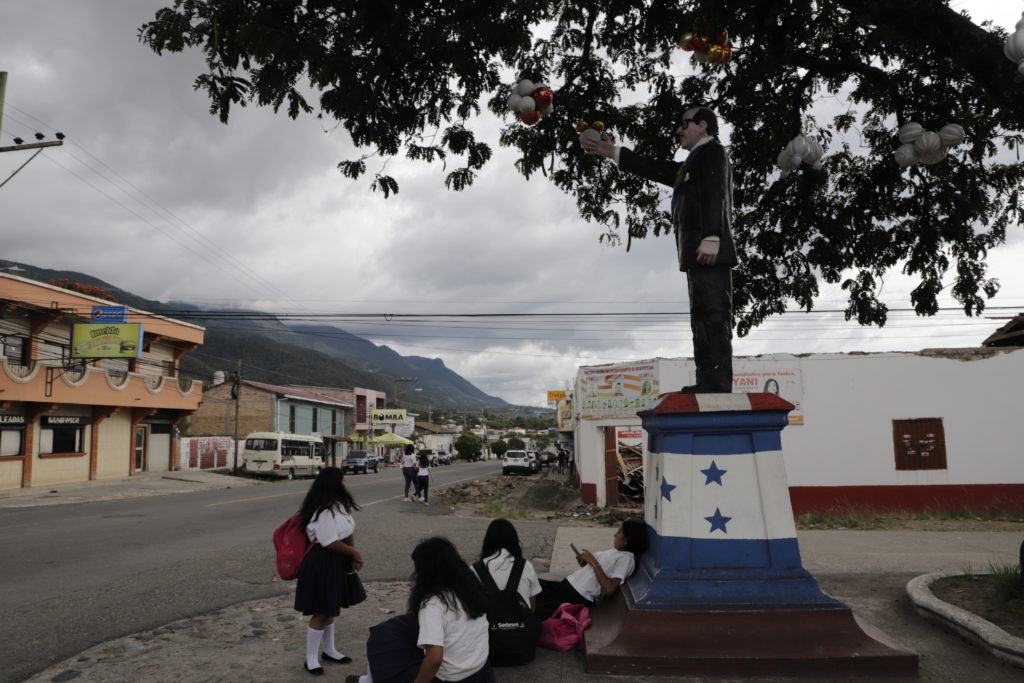
Marzuca said that in recent months Nueva Ocotepeque hasn’t been in much of a predicament with respect to crowds of migrants on the streets. There are fewer people camping in public spaces such as the central park, a place visited by Contracorriente on two consecutive nights where only one family was found. However, Marzuca also pointed out that there’s environmental damage, especially in the area where buses leave passengers. A “considerable amount of garbage” and waste from portable restrooms –which did not exist a year ago– has had a negative impact on the environment.
“Municipalities in the region are poor and we tackle this issue out of humanity,” Marzuca explained. He stressed on several occasions during the interview that there’s no budget to provide assistance to migrants since the guidelines are established by the Secretariat of Finance (Secretaría de Finanzas). However, he said that they have assisted migrants in many ways, for instance, there’s a clinic in Nueva Ocotepeque that looks after migrants, although he emphasized that this ends up impacting the municipal budget because “it’s medication that can be used for the people of the municipality but it is being used for migrants. One might think that we’re selfish for thinking this way, but it’s the reality,” he said.
Saúl Dubón, project facilitator at the local Association of Non-Governmental Organizations (ASONOG), said that it’s not easy to find a balance between respecting migrants’ rights and reducing the impact on the communities they transit through: “we fight for migrants’s rights and we want to create awareness among authorities, but we also fight for communities, through which migrants travel. We want to reduce the damage done by the flow of migrants, it’s highly improbable that the transit of thousands of people doesn’t have an impact,” he said.
“Xenophobia is an issue we are working on so that the Honduran population does not hold negative sentiments towards migrants. Migration is a human right granted to them and to our fellow Hondurans who also leave the country. This is part of the struggle too,” he added.
What should be done with the trash?
Santa Fe is the last Honduran municipality before reaching Guatemala. It has a population of about 4,500 whose main economic activity is agriculture: staple grains, vegetables and coffee. The park is quite small, and the municipal office is spacious; it’s a place where the daily transit of 5,000 migrants is more visible and its influence on the dynamics of the town is evident.
An anonymous source shared a story that took place in the border which raises an alarm and points to signs that children are involved in this business. The source said that a minor innocently offered a public official the opportunity to work smuggling migrants. The minor asked him how much he earned and upon listening to the answer –which was made up because that number is triple the amount that a civil servant earns– responded in an unusual manner: “If you work with me, you can make that amount in a day.”
A civil servant, who works at the local municipality, says that a person involved in this business, with one or more vehicles to transport migrants, can earn up to $2,000, or 50,000 lempiras, a day.
During a visit by Contracorriente to a humanitarian aid station located in Machuca, four kilometers from the border, we saw a nine-year-old boy wandering around among migrants. “Are you lost?” a human rights volunteer asked, “No, I’m looking for a friend’s acquaintance,” the boy said. Somebody else figured out that he was a “young coyote.”
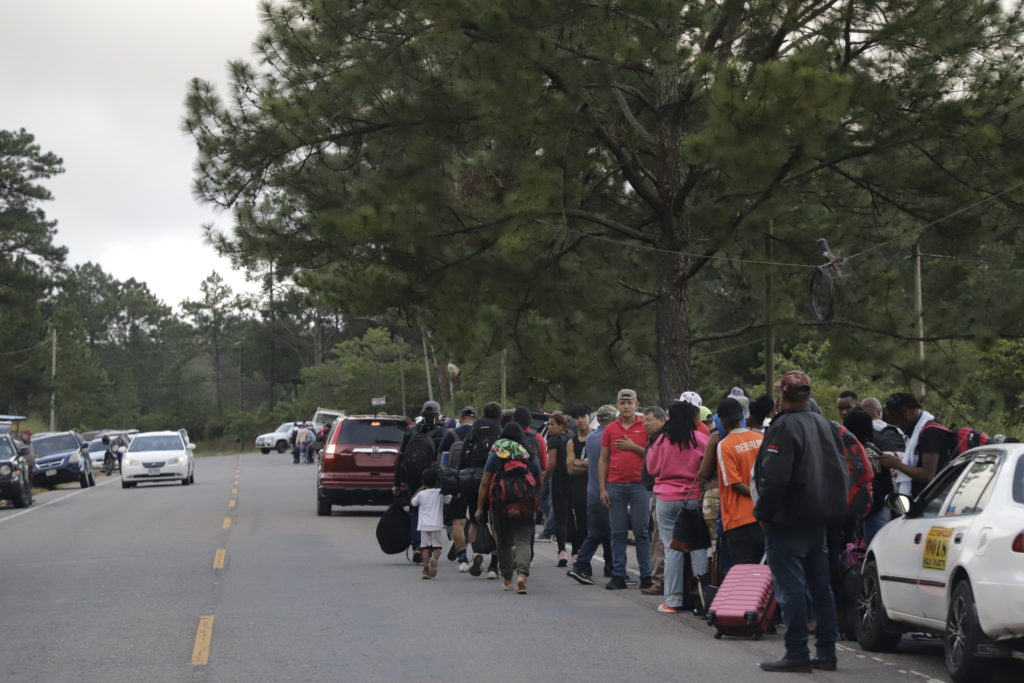
The desire to work in the profitable and illegal business of smuggling migrants, including Hondurans, who are heading to the U.S., has left a gap of skilled workers in Santa Fe. “If you want to hire someone, it’s going to cost you. Most people nowadays are transporting and smuggling migrants, they call it work. It’s very difficult to find workers despite an increase in wages,” Oliva said.
On October 25, 2023, Oliva met with the Contracorriente team and ASONOG representatives because José Rosa, the mayor, was not in the office and Liliam Moreira, deputy mayor, was attending to other matters, since her employees resigned to leave to the U.S. “She doesn’t come often,” Oliva said.
Olivia then talked about an issue that has caused concern throughout the entire productive sector: “In communities, it’s important that younger generations continue the work of their parents, but they don’t want to work here anymore, they want to leave or smuggle migrants.”
Several years ago, during coffee harvest season, thousands of Guatemalans came to Honduras because the country doesn’t have the workforce to cover that temporary demand. Now, day laborers are scarce in farms that grow onions and other vegetables. They earn between 200 and 250 lempiras a day, but if they smuggle migrants they could earn thousands in a single day. Oliva says that “they earn much more in a three-hour period. Many people are working in that business.”
The flow of thousands of migrants have caused other problems in Santa Fe. Johnny Oliva said that the municipal corporation is concerned about trash that builds up in its jurisdiction, most of which is a result of migrants in transit. “There has always been trash because it’s a cultural thing,” acknowledges the official, but said that in recent months it has increased to the point that the municipal corporation issued an emergency declaration.
Oliva mentioned that the arrival of 3,000 to 4,000 migrants has created an unhealthy environment in Machuca, close to the urban area of Santa Fe. Besides trash, the area has turned into an enormous public toilet even though there are five public restrooms, which prove to be insufficient. “This is a small municipality. It’s tough, an open meeting of the council will take place on Friday, October 27, where I’m sure this issue will be discussed.”
Another topic for discussion is the fact that hundreds of people are using areas close to the highway as toilets. According to Oliva, organizations that work in the region are afraid that the mismanagement of excrement will cause an epidemic. “We are worried about the possibility of a virus not seen before in the region affecting us.”
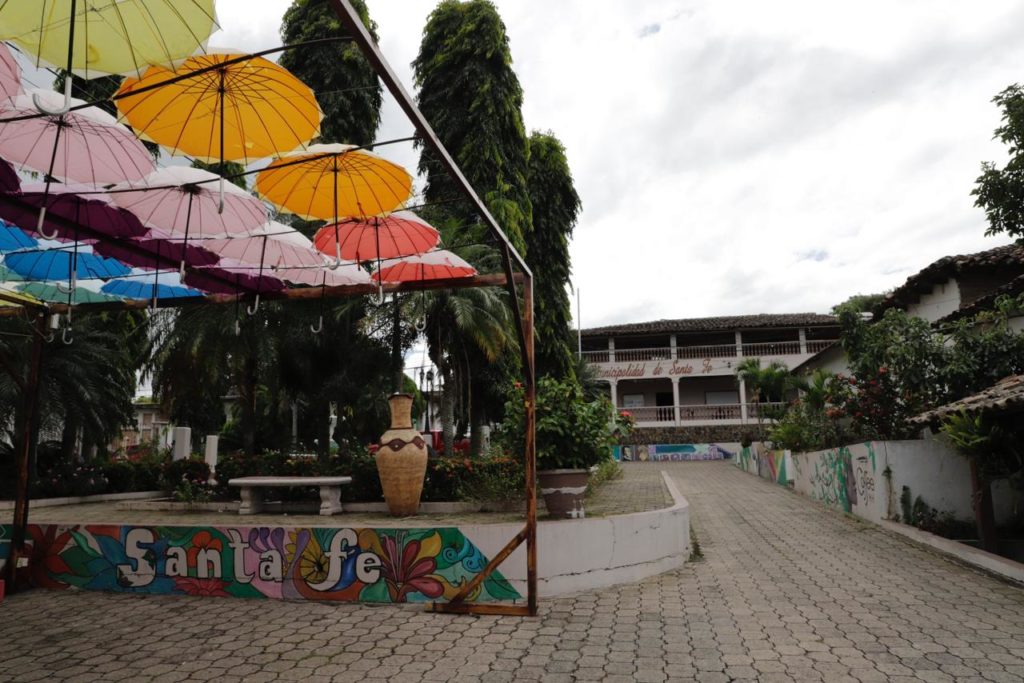
Lastly, Oliva complained of the lack of public transportation provided to locals. They have been affected because transportation services don’t operate under schedule anymore and services are provided according to the needs of migrants. “Bus drivers only care about migrants and not about Hondurans.”
Migrants
Every day thousands of migrants from a wide range of nationalities arrive: Chinese, Russian, Haitian, Colombian, Ecuadorian, Senegalese, Afghan, Venezuelan, and others. They are all vulnerable in one way or another. “Russians, Chinese, and Afghans struggle the most with communication, they are disoriented and have to use Google translate,” said an employee from the Institute for Infants, Adolescents, and Family (Dirección de la Niñez, Adolescencia y Familia – DINAF), whose offices are located near the border.
Upon arrival at Machuca, migrants are expected by coyotes and guides, who take advantage of the lack of oversight by the National Police, and charge them $20 for a four-kilometer ride. Migrants then have to pay $5 to cross the border through clandestine roads. Many are accompanied by people who show signs of their involvement in the smuggling business, they are well-dressed and carry expensive phones. Others move at a slower pace, requesting help or taking temporary jobs. According to testimonies by migrants and human rights organizations, by the time migrants leave Honduras, in most cases their rights were violated.
The State’s humanitarian response has been inefficient. While it’s true that entry permits, which allow migrants to move throughout the country, are issued without delay, there are no mechanisms to counteract extortion and abuses perpetrated by authorities en route.
There’s also death on the border. Recently, four migrants died after the bus that was transporting them in the early morning crashed in Copán.. The accident was reported by domestic and international media outlets. A few years ago, four migrants, two men and two women, also died asd they were about to leave Honduras.
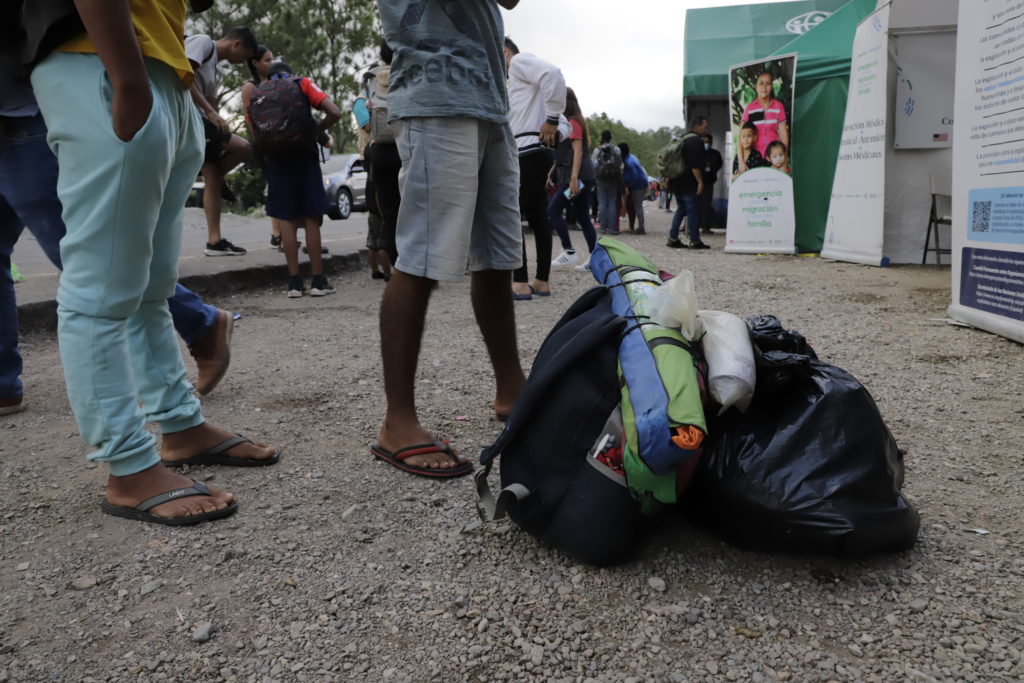
Hundreds, if not thousands, of children are vulnerable to all kinds of threats found on this journey. The humanitarian assistance station where volunteers from ASONOG, International Red Cross, Mennonite Commission for Social Action (Comisión de Acción Social Menonita –CASM), DINAF and others have assisted children with dehydration, diarrhea and respiratory diseases.
Occasionally, minors are separated from their parents. Family units are allowed through the border, but the father is almost always denied access through police checkpoints and is forced to continue the journey on clandestine roads. The inherent vulnerability of migrants compels many mothers and their children to take those roads on the mountains to avoid being separated from the father. According to DINAF staff, this is what most families want to avoid.
Although families are aware that mothers and their children can cross the border without needing to take the detour, human rights organizations consider that the decision is forced upon them. At police checkpoints the father is given the green light and must go through clandestine roads. “This is the moment when families don’t know what to do, they feel vulnerable and take roads around the checkpoint.”
DINAF staff in the area reached the conclusion that children are not being protected if they walk for more than 30 minutes through the thicket. “If we allow this, we’re putting the children at risk. We have talked to the police, but they don’t listen.”
Saúl Dubón, member of ASONOG, said that one of the main goals of humanitarian organizations in the region is to inform migrants that their status doesn’t deprive them of their rights. “Those who demand that their rights be respected rarely face violations, but very few do so,” he said.
The Honduran State and all public institutions should protect the rights of the most vulnerable people, whether it’s due to the lack of financial means, language barrier or being in an unfamiliar country. Since the State is not providing the necessary assistance, “we, NGOs, are demanding that they do. On some issues, the State is completely absent, on others, far from providing protection, they violate human rights,” Dubón said.
NGO representatives met in Ocotepeque on Thursday, October 26, to discuss a humanitarian response to the continuous arrival of migrants. At present, there is no systematic approach to diligently take care of people in need of humanitarian assistance at border crossing points. The goal of the meeting, coordinated by ASONOG and Oxfam in Honduras, was to establish coordinated efforts grounded on gender and human rights. “This is born from a need that has not been addressed, there are organizations that have their own protocols, but I very much doubt that there is a response plan in the area to mitigate risk or a plan for immediate response,” Dubón said.
For now, the flow of migrants continues. Communities are upset about the impact, and government intervention is crucial to reduce the effects. Migrants continue their journey through Honduras leaving thousands of dollars behind. And things will not change further ahead. As soon as they arrive in Guatemala, guides are waiting to take them to Esquipulas for $20, a municipality located 15 kilometers from the border. That’s how the journey to another country begins.

